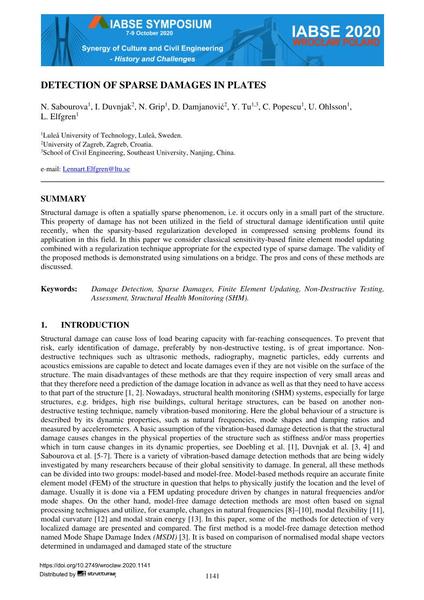Detection of Sparse Damages in Plates

|
|
|||||||||||
Détails bibliographiques
| Auteur(s): |
N. Sabourova
I. Duvnjak D. Damjanović Y. Tu C. Popescu U. Ohlsson L. Elfgren |
||||
|---|---|---|---|---|---|
| Médium: | papier de conférence | ||||
| Langue(s): | anglais | ||||
| Conférence: | IABSE Symposium: Synergy of Culture and Civil Engineering – History and Challenges, Wrocław, Poland, 7-9 October 2020 | ||||
| Publié dans: | IABSE Symposium Wroclaw 2020 | ||||
|
|||||
| Page(s): | 1141-1148 | ||||
| Nombre total de pages (du PDF): | 8 | ||||
| Année: | 2020 | ||||
| DOI: | 10.2749/wroclaw.2020.1141 | ||||
| Abstrait: |
Structural damage is often a spatially sparse phenomenon, i.e. it occurs only in a small part of the structure. This property of damage has not been utilized in the field of structural damage identification until quite recently, when the sparsity-based regularization developed in compressed sensing problems found its application in this field. In this paper we consider classical sensitivity-based finite element model updating combined with a regularization technique appropriate for the expected type of sparse damage. The validity of the proposed methods is demonstrated using simulations on a bridge. The pros and cons of these methods are discussed. |
||||
